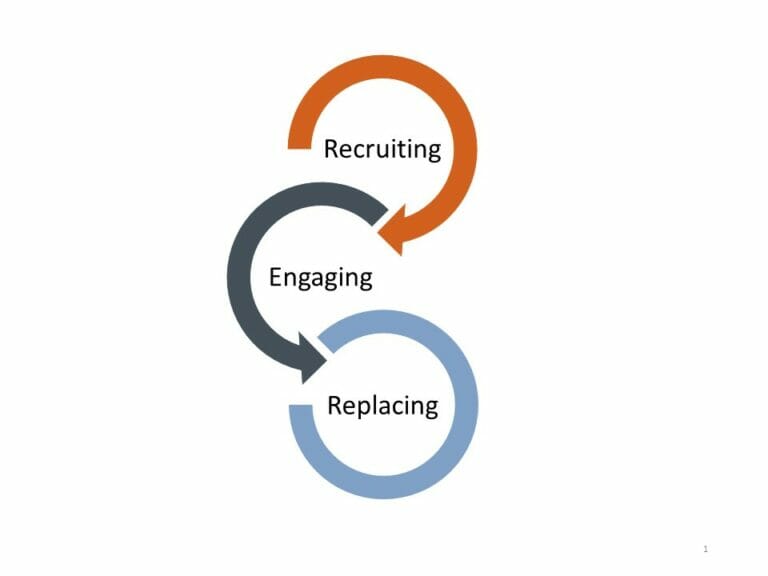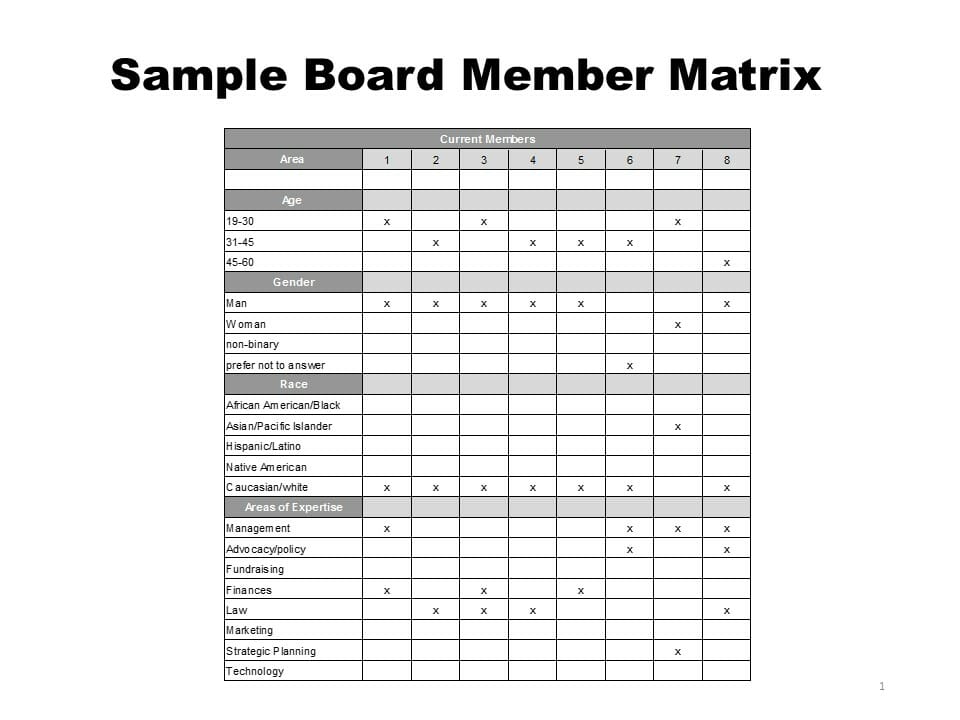A nonprofit organization’s board plays a big part in the success or failure of the organization and is responsible for its fiduciary wellbeing. Finding the right board members and maintaining a balance within the board itself requires a great deal of consideration and dedication. So how can a nonprofit organization ensure that its board is an effective one?
It has been found that effective boards include board members that:
- Always act in an ethical manner
- Maintain a mission-oriented focus at all times
- Come from diverse backgrounds (e.g. economic, ethnic, profession, gender, age, etc.)
- Act as ambassadors to the mission
- Take responsibility for fundraising
- Provide strategic direction
- Ensure adequate resources
- Provide financial oversight
- Prioritize and maintain a strong relationship with the organization’s CEO
A successful process for the creation and preservation of an effective board will encompass three activities: Recruiting, Engaging, and Replacing.¹

RECRUITING
Assess needs of the board
In order to successfully recruit, you must assess what your organization needs from the board on a macro level. Ask the following questions:
- What are the goals of the organization’s strategic plan?
- In what direction is the organization going?
- Is the board in tune with and connected to the community it serves?
- Is the board diverse currently?
It is also important to identify the skills that are needed by board members in order to be successful. From financial skills to marketing experience to prior experience with fundraising; what do you expect from your board members? A board matrix can be extremely helpful in assessing coverage of must have skills or experience areas and can aid in providing a high-level view of your board’s diversity status. Are you gaining insight from multiple vantage points or all of your board members the same?

Recruitment takes place in three phases: recruitment, evaluation, and finally nomination. To help facilitate a continuous recruiting process, a prospect pool should be established and maintained by the organization. It is a good idea to regularly hold informal recruiting events to gauge interest and educate prospects on the finer points of board membership. During the evaluation phase potential nominees are interviewed and assessed for their skill sets. Post interview, these assessments can be used to evaluate candidates and decide who is the best fit for nomination.
A nonprofit organization should always be actively recruiting potential candidates and keeping in regular contact with interested parties. The most successful board recruiting programs are carried on by the entire organization and not just a select few individuals.
ENGAGING
Engaging refers to the ongoing process of developing relationships with new and veteran board members.
Once you have new board members, it is best practice to hold a new board member orientation. This helps ensure that new board members are properly trained. If you do not already have one, create a board handbook and include:
- A board member directory
- Roles and responsibilities
- Organization documents
- Your organization’s strategic plan
- List of current programs
- Financial documents
- Organizational policies
- A staff list with job descriptions
- A board calendar
- Recent board minutes
- Common acronyms and terms
Include the board chair, your executive director, and your governance committee in the orientation session, and you may also want to invite your current members. Make sure to cover your organization’s mission, its history, current finances, the structure of your organization, the role of the board, and finally, its strategic plan. Stress the importance of mentoring and encourage seasoned board members to pair up with newly elected members. Promote involvement and engagement through the creation of committees and task forces and establish clear and specific roles. Foster relationships between board members outside of the organization. Examples would be board member social events and board retreats. Engaged boards also make sure to regularly check in with other board members. Ensure that your board members’ time is always used wisely by holding effective meetings with a clear purpose and clearly set goals.
REPLACING
Finally, it is vital to continually inject fresh perspectives into your organization. Set term limits to help avoid lack of engagement among board members. Watch for any signs of dysfunction in the board, such as lack of order or respect, struggles with confidentiality, lack of trust or a particularly dominating board member. Do not hesitate to replace a member that is not acting in the best interest of the organization.
IN CLOSING
Building a quality board is not something that happens overnight, but the effort it takes will pay off with board members that are engaged, productive, and committed to the success of your nonprofit organization. For questions on how to develop a successful board, contact LaPorte Tax Director Jack Wiles.
¹BoardSource. The Board Building Cycle: Finding, Engaging, and Strengthening Nonprofit Board Members, Third Edition. 2019 https://boardsource.org/product/board-building-cycle-third-edition/

